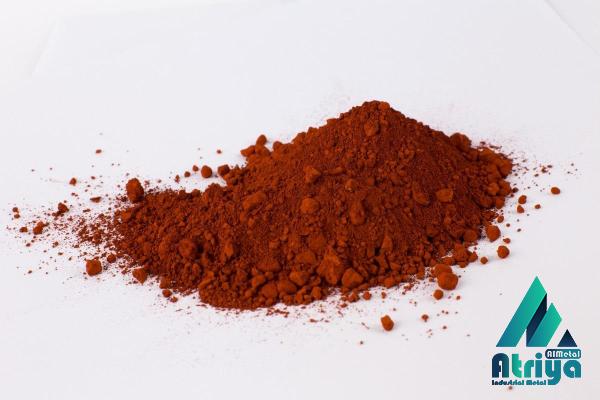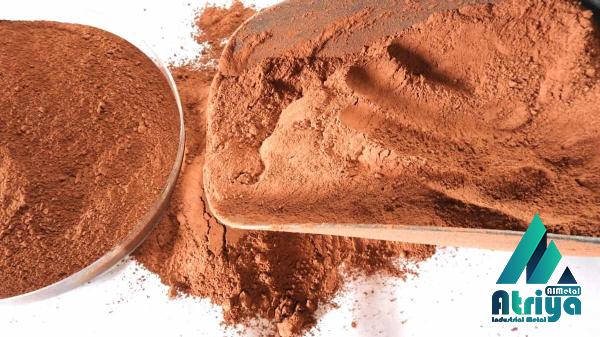Mill scale is a flaky surface that forms on the exterior of freshly produced steel and iron products. It consists of mostly iron oxides, primarily magnetite (Fe3O4), hematite (Fe2O3), and wustite (FeO), along with traces of other compounds such as quartz. Mill scale is a commonly encountered byproduct in the steelmaking industry, and it can have several beneficial uses. The formation of mill scale occurs during the hot rolling or forging process of steel. When steel is heated and worked at high temperatures, iron oxide layers are formed on the surface due to the oxidation of iron. These layers, known as mill scale, are typically blue-black in color and have a flaky or scaly texture. Mill scale formation is unavoidable in the steel production process, and its removal is necessary before further processing or finishing. Mill scale is typically removed through a process called descaling, which involves mechanical or chemical methods. Mechanical descaling involves the use of high-pressure water jets or abrasive materials to physically remove the mill scale. Chemical descaling involves the use of acidic solutions to dissolve the mill scale.
iron
 Each method has its advantages and disadvantages, and the choice of descaling method depends on factors such as the scale thickness, material type, and desired surface finish. Once removed, mill scale can be recycled or repurposed in various ways. One of the most common uses of mill scale is in the production of cement. The iron oxides present in mill scale act as a source of iron in the cement-making process. Mill scale can be directly mixed with cement clinker during the grinding stage to produce cement. This not only reduces the need for additional iron ore but also contributes to the overall composition and properties of the cement. In addition to its use in cement production, mill scale can also be utilized as a raw material in the production of iron-based chemicals. Iron oxide pigments, such as red iron oxide (Fe2O3) and black iron oxide (Fe3O4), are widely used in various applications, including paints, coatings, ceramics, and plastics. Mill scale can be processed to obtain iron oxide pigments through various methods, such as thermal decomposition or wet chemical precipitation. These pigments have good stability, color consistency, and heat resistance, making them valuable for numerous industries. Furthermore, mill scale can be used as a raw material for the production of iron powders. Iron powders are widely used in metallurgy, automotive, chemical, and electronics industries.
Each method has its advantages and disadvantages, and the choice of descaling method depends on factors such as the scale thickness, material type, and desired surface finish. Once removed, mill scale can be recycled or repurposed in various ways. One of the most common uses of mill scale is in the production of cement. The iron oxides present in mill scale act as a source of iron in the cement-making process. Mill scale can be directly mixed with cement clinker during the grinding stage to produce cement. This not only reduces the need for additional iron ore but also contributes to the overall composition and properties of the cement. In addition to its use in cement production, mill scale can also be utilized as a raw material in the production of iron-based chemicals. Iron oxide pigments, such as red iron oxide (Fe2O3) and black iron oxide (Fe3O4), are widely used in various applications, including paints, coatings, ceramics, and plastics. Mill scale can be processed to obtain iron oxide pigments through various methods, such as thermal decomposition or wet chemical precipitation. These pigments have good stability, color consistency, and heat resistance, making them valuable for numerous industries. Furthermore, mill scale can be used as a raw material for the production of iron powders. Iron powders are widely used in metallurgy, automotive, chemical, and electronics industries.
Specifications of iron
 They are used as a component in the production of sintered components, magnetic materials, friction materials, and pigment powders. Mill scale can be directly processed through a process called magnetic separation, where the iron oxide particles are separated from other impurities. The obtained iron powder can then be further processed and refined to meet the specific requirements of different applications. Another potential use of mill scale is in the production of iron-rich soil amendments. Iron deficiency is a common problem in many agricultural soils, and the addition of iron-rich amendments can help improve plant growth and development. Mill scale, with its high iron content, can be ground into a fine powder and added to soil as a natural and sustainable source of iron. This can be particularly beneficial in areas where access to synthetic fertilizers is limited or costly. Additionally, mill scale can be used as a raw material in the production of metallic iron. Direct reduction processes, such as the Midrex and HYL-III processes, can utilize mill scale as a feedstock. These processes involve the reduction of iron oxides using natural gas or hydrogen to produce metallic iron.
They are used as a component in the production of sintered components, magnetic materials, friction materials, and pigment powders. Mill scale can be directly processed through a process called magnetic separation, where the iron oxide particles are separated from other impurities. The obtained iron powder can then be further processed and refined to meet the specific requirements of different applications. Another potential use of mill scale is in the production of iron-rich soil amendments. Iron deficiency is a common problem in many agricultural soils, and the addition of iron-rich amendments can help improve plant growth and development. Mill scale, with its high iron content, can be ground into a fine powder and added to soil as a natural and sustainable source of iron. This can be particularly beneficial in areas where access to synthetic fertilizers is limited or costly. Additionally, mill scale can be used as a raw material in the production of metallic iron. Direct reduction processes, such as the Midrex and HYL-III processes, can utilize mill scale as a feedstock. These processes involve the reduction of iron oxides using natural gas or hydrogen to produce metallic iron.
buy iron
 The metallic iron can then be further processed and used in various applications, including steelmaking, foundry casting, and the production of iron-based alloys. While mill scale offers various potential uses, it is important to consider its potential environmental impact. Mill scale contains traces of heavy metals and other contaminants, which can have adverse effects on the environment if not properly managed. Proper disposal, recycling, or treatment methods should be implemented to prevent any potential harm. In conclusion, mill scale is a byproduct of the steelmaking process that contains mainly iron oxides. It can be recycled and repurposed for various applications, including cement production, iron oxide pigments, iron powders, soil amendments, and metallic iron production. These uses not only reduce waste and reliance on raw materials but also contribute to the sustainable development of industries. However, proper management and consideration of potential environmental impacts are crucial when utilizing mill scale.
The metallic iron can then be further processed and used in various applications, including steelmaking, foundry casting, and the production of iron-based alloys. While mill scale offers various potential uses, it is important to consider its potential environmental impact. Mill scale contains traces of heavy metals and other contaminants, which can have adverse effects on the environment if not properly managed. Proper disposal, recycling, or treatment methods should be implemented to prevent any potential harm. In conclusion, mill scale is a byproduct of the steelmaking process that contains mainly iron oxides. It can be recycled and repurposed for various applications, including cement production, iron oxide pigments, iron powders, soil amendments, and metallic iron production. These uses not only reduce waste and reliance on raw materials but also contribute to the sustainable development of industries. However, proper management and consideration of potential environmental impacts are crucial when utilizing mill scale.











Your comment submitted.